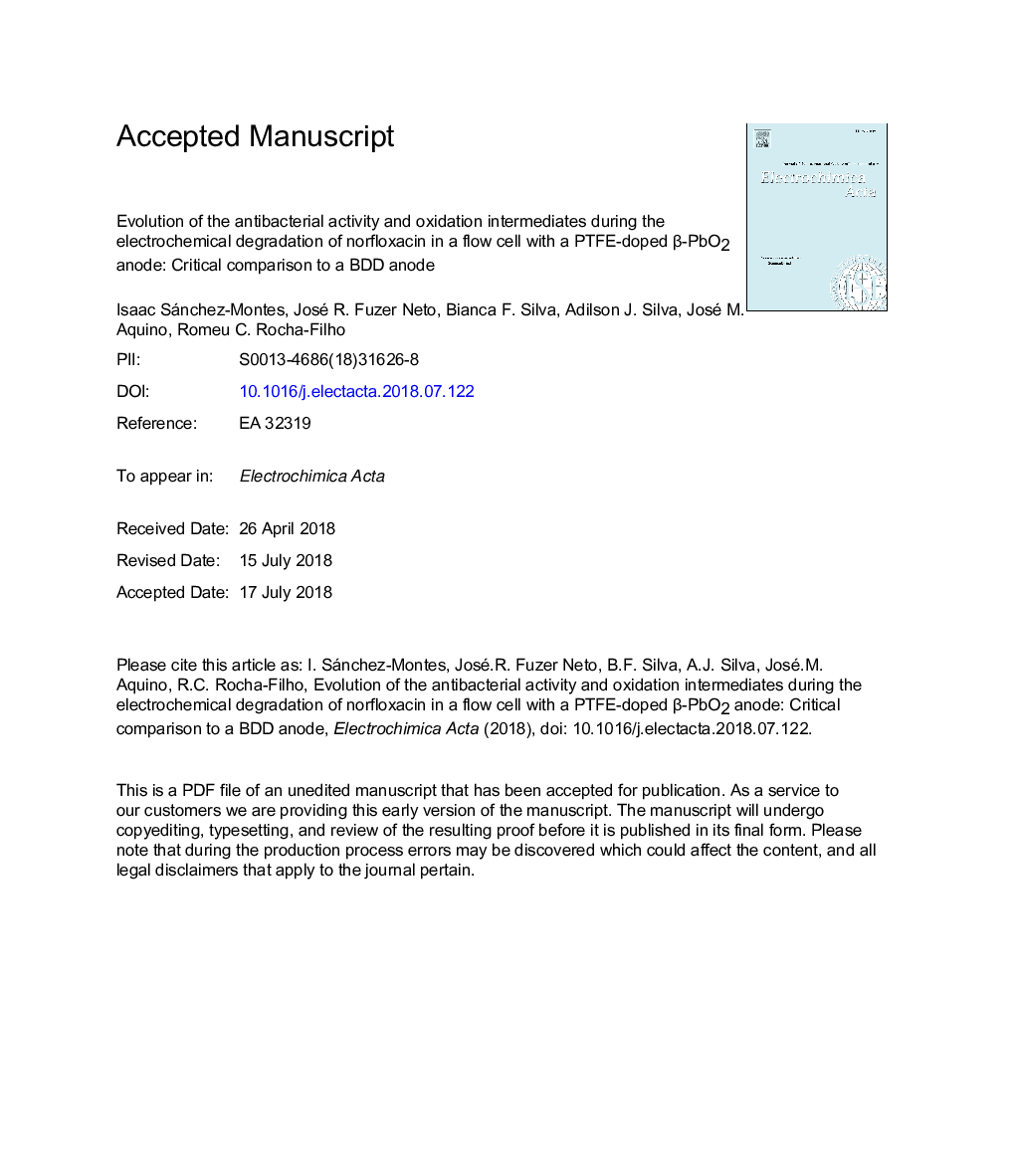| Article ID | Journal | Published Year | Pages | File Type |
|---|---|---|---|---|
| 6601911 | Electrochimica Acta | 2018 | 43 Pages |
Abstract
The electrochemical degradation of the antibiotic norfloxacin (NOR) was investigated using an electrodeposited polytetrafluoroethylene (PTFE)-doped β-PbO2 anode; its attained performance was compared to that of a boron-doped diamond (BDD) anode to check out a literature claim of superior performance by the former anode. The PTFE content in the electrodeposition bath was optimized to lead to a significantly extended service life of the β-PbO2 anode despite its titanium substrate. The NOR degradation electrolyses (100â¯mgâ¯Lâ1 NOR in 0.1â¯molâ¯Lâ1 Na2SO4) were carried out in a filter-press flow cell (flow rate of 420â¯Lâ¯hâ1) using the following optimized conditions: no pH control, current density of 10 mAâ¯cmâ2, and 40â¯Â°C. The electrooxidation process performance under these conditions was assessed through the evolution of the attained removals of NOR, total organic carbon (TOC), and antibacterial activity against Escherichia coli; the evolution of oxidation intermediates (aromatic compounds and carboxylic acids) was also assessed. In spite of the complete oxidation of NOR, the TOC removal attained with the PTFE-doped β-PbO2 anode was relatively low (70% after 12â¯h, compared to 90% after only 5â¯h for a Si/BDD anode). As a consequence of this inferior performance comparatively to that of a BDD anode, a higher number of aromatic intermediates was detected; these intermediates seemed to still present antibacterial activity against Escherichia coli, which lasted even after all NOR was oxidized, contrary to the case of the electrooxidation with a BDD anode. The performance of the PTFE-doped β-PbO2 anode was not superior to that of a BDD anode, i.e. the doping of the β-PbO2 film with PTFE, making it hydrophobic, does not change the oxidation power of the anode despite increasing its service life.
Related Topics
Physical Sciences and Engineering
Chemical Engineering
Chemical Engineering (General)
Authors
Isaac Sánchez-Montes, José R. Fuzer Neto, Bianca F. Silva, Adilson J. Silva, José M. Aquino, Romeu C. Rocha-Filho,
